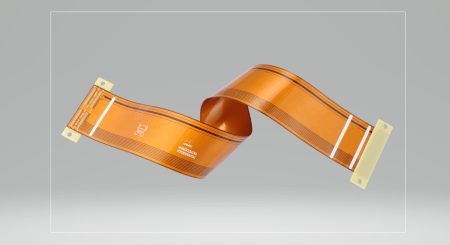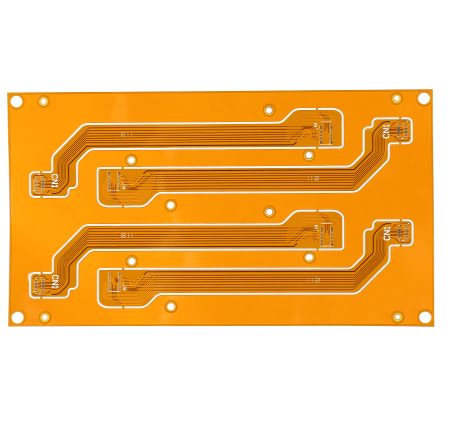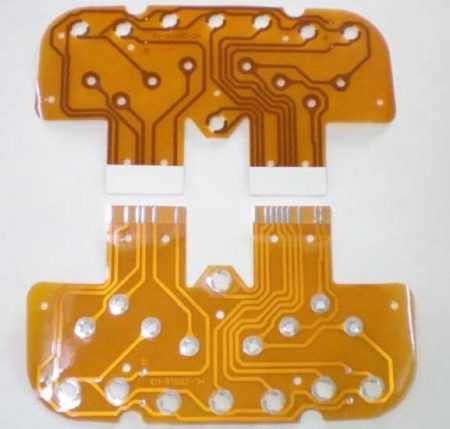- +86-755-23012705
- Building 3, Jinfeng Industrial Park, Fuyong Street, Baoan District, Shenzhen ,China
- [email protected]
If the circuit design is relatively simple, the total volume is not large, and the space is suitable, most of the traditional interconnect methods are much cheaper. If the circuit is complex, handles many signals, or has special electrical or mechanical property requirements, polyimide circuits (flexible circuits) are a good design choice. When the size and performance of the application exceed the capabilities of a rigid circuit, flexible assembly is the most economical.
A 12mil pad with a 5mil through-hole and a 3mil line and pitch can be made into a flexible circuit with a single piece of film. As a result, it is more reliable to mount the chip directly on the film. Because it does not contain flame retardants that can be a source of ionic drill contamination. These films may be protective and cure at higher temperatures, resulting in higher glass transition temperatures. The reason for the cost savings of flexible materials compared to rigid materials is the elimination of connectors.
The high cost of raw materials is the main reason for the high price of flexible circuits. The price of raw materials varies widely, with the lowest cost polyester flex circuits costing 1.5 times more than rigid circuits and high-performance polyimide circuits up to 4 times or more. At the same time, the flexibility of the material makes it difficult to automate the manufacturing process, resulting in lower yields, and defects such as peeling off flexible attachments and broken lines during the final assembly process.
This is more likely to happen when the design is not suitable for the application. Under high stresses caused by bending or forming, it is often necessary to select a reinforcing or reinforcing material. Despite the high cost of raw materials and the hassle of manufacturing, the foldable, bendable and multi-layer panelization capabilities reduce the overall component size and the material used, resulting in a lower total assembly cost.

The flexible circuit industry is in the midst of a small but rapid development. The polymer thick film method is an efficient and low-cost production process. The process selectively screen-prints conductive polymer inks on inexpensive, flexible substrates. The representative flexible substrate is PET. Polymer thick film conductors include silk-screen metal fillers or toner fillers. The polymer thick film method is inherently clean, using lead-free SMT adhesives that do not require etching.
Because of the addition process and low cost of the substrate, the polymer thick film circuit is 1/10 of the price of copper polyimide thin film circuit and 1/2~1/3 of the price of rigid circuit board. The polymer thick film method is particularly suitable for the control panel of the device. In mobile phones and other portable products, the polymer thick film method is suitable for converting components, switches, and lighting devices on printed circuit motherboards into polymer thick film circuits. It saves costs and reduces energy consumption.
Generally speaking, polyimide circuits are indeed more expensive and costly than rigid circuits. When flexible boards are manufactured, many of the parameters have to be faced with the fact that many parameters are out of tolerance. The difficulty in manufacturing flexible circuits lies in the flexibility of the material.

Despite these cost factors, the price of flexible assembly is decreasing and becoming closer to that of conventional rigid circuits. The main reasons for this are the introduction of newer materials, the improvement of production processes and the change of structure. The current structure allows for a higher thermal stability of the product, with few material mismatches. Some newer materials allow for more precise lines due to thinner copper layers, making components lighter and more suitable for small spaces.
In the past, copper foil was adhered to an adhesive-coated medium using a rolling process, but now it is possible to generate copper foil directly on the media without the use of adhesives. These techniques can produce copper layers that are several microns thick and precise lines that are 3m.1 or even narrower in width. Flexible circuits with some adhesives removed are flame retardant. This accelerates the uL certification process and further reduces costs. Flexible circuit boards, solder masks, and other surface coatings further reduce flexible assembly costs.

In the coming years, smaller, more complex, and more expensive to assemble flexible circuits will require more novel methods of assembly and the addition of hybrid flex circuits. The challenge for the flex circuit industry is to leverage its technological advantages to keep pace with computers, telecommunications, consumer demand, and a dynamic market. In addition, flexible circuits will play an important role in the lead-free movement.
Your Trusted Partner for PCB Success: XPCB Limited
Let XPCB Limited be your guide to PCB success. Our comprehensive PCB manufacturing, rapid prototyping, and turnkey PCBA services are designed to meet your needs with ease. Count on us to deliver reliable solutions that exceed your expectations. With XPCB Limited, your journey to PCB excellence starts here.






XPCB Limited is a premium PCB & PCBA manufacturer based in China.
We specialize in multilayer flexible circuits, rigid-flex PCB, HDI PCB, and Rogers PCB.
Quick-turn PCB prototyping is our specialty. Demanding project is our advantage.
Tel : +86-136-3163-3671
Fax : +86-755-2301 2705
Email : [email protected]
© 2024 - XPCB Limited All Right Reserve
